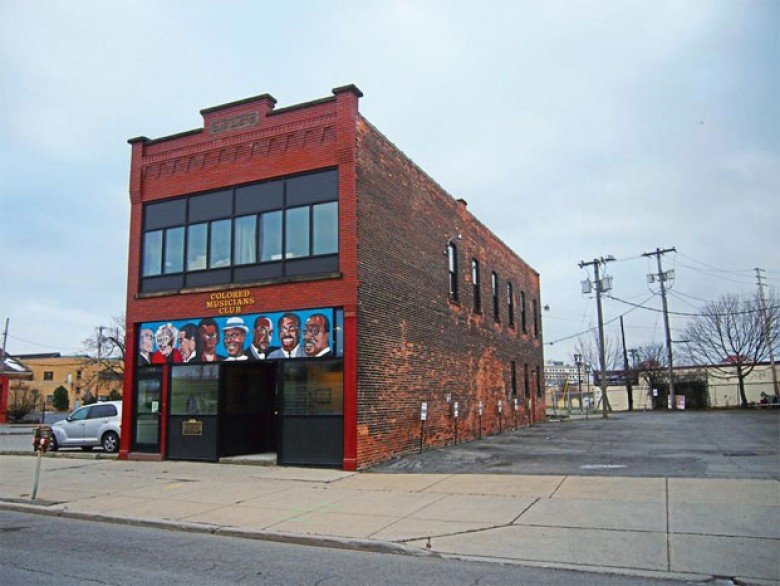"In this upstate NY city, the jazz never died. It went to The Colored Musicians Club."
Mint is the second-largest business newspaper in India. Livemint.com is its online publication. What in the world is it doing publishing articles like Buffalo, New York: After The Jazz Age? Given the distance, perhaps we ought to forgive the left-handed nature of some of the inaccurate statements made by Elen Turner.
"Most tourists who venture to Buffalo, in upstate New York, have taken a wrong turn looking for the No. 40 bus to Niagara Falls. In the US, Buffalo is a byword for two things: extreme snowfall and Rust Belt depression."
Ms. Turner notes that "...Buffalonians are quick to defend their city" and calls Buffalo's renaissance "tentative." She calls out the city as racially divided: "Buffalo, like many American cities, is segregated: one suburban enclave for the whites, another for the Hispanics, a sprawling mess of neglect for everyone else. So that warning to not venture East is not without bias."
The article improves substantially when she finally gets to the Colored Musicians Club, providing you blow past the "rotund ladies in leopard prints and ugly-Christmas-sweatered men" commentary. It gets genuinely interesting when she returns the following (cold, windy) day to visit the outstanding Museum. This is the "George Scott-effect." Trust me. This man's passion for jazz in Buffalo and the Colored Musicians Club is utterly irresisitable. Turner was listening carefully during the guided tour Scott surely gave her.
"A map depicts Buffalo’s place in the jazz scene of the early 20th century. New Orleans—Kansas City—Chicago—Detroit—Buffalo—Pittsburgh—Philadelphia—New York. Before it started rusting, Buffalo was a Great Lakes trade hub, conveniently situated between New York City to the south-east, Toronto to the north and Cleveland, Detroit and Chicago to the west. It was a railroad hub too, and a major stop on the “chitlin circuit”, a network of performance venues across the US that were safe for black entertainers. Established in 1917, the club became very popular in the 1930s. It became a ritual for visiting black musicians—Duke Ellington, Billie Holiday, Dizzy Gillespie, Louis Armstrong—to play there. These famous musicians, as well as lesser-known local ones, are celebrated at the club and the museum. The whole area within which The Colored Musicians Club stands was once Buffalo’s “jazz corridor”. Now, it is not just the only jazz venue still operating, it is the only music or night-life venue of any sort. Broadway now has more abandoned, boarded-up shopfronts than inhabited buildings.
"Buffalo and its environs have long held an important place in African-American history. This region bordering Canada was part of the Underground Railroad, a 19th century network of secret routes and safe houses through which African-Americans travelled from the southern states—where slavery was lawful until 1865—through the northern states and into Canada. The city’s involvement in the civil rights movement also began early, with protests against offensive depictions of African-Americans at the 1901 Pan-American Exposition in Buffalo. While the petitions of some of Buffalo’s most respected African- American citizens were ignored, they led to the creation of the National Association for the Advancement of Colored People, in 1909.
"Buffalo’s African-American population swelled in the early 20th century, the result of emancipation from slavery in the south. In 1917, African- American musicians in Buffalo formed the Local #533. Previously, there had only been one musicians’ union in Buffalo, the Local #43— it was all-white. Despite this segregation, George Scott told me proudly that the club had always been racially inclusive. Within six months of its formation, club members were allowed to bring guests of any race.
"The progress of the civil rights movement in the US also, somewhat ironically, put Local #533 at risk. By the 1950s, more and more jazz bands had become racially integrated. This put the survival of African-American Locals at risk. In 1964, the American Federation of Musicians declared that in accordance with the civil rights Act, all local music clubs must desegregate. By 1969, Buffalo Locals #43 and #533 merged to become the Buffalo Musicians’ Association, or Local #92. Inevitably, perhaps, it showed a preference for white musicians.
"The Colored Musicians Club’s establishment as a separate entity had been tactical, however. The property at 145, Broadway was kept legally and financially separate from the Local. When the segregated Locals were told to merge, the club was not obliged to follow suit. This meant that Buffalo’s African-American musicians continued to have a space of their own.
"Through its interactive exhibits, the museum taught me the difference between Gospel and Ragtime, Blues and Boogie Woogie, Big Band and Be-Bop. When I returned to the club, I had a better idea of what I was listening to. A young female African-American singer crooned modern jazz, followed by a white teenager improvising on an electric guitar, accompanied by an African-American organist.
"The musicians who perform at the club now are not all “colored” by any means. So what of its name? There is no question of changing it, despite the term being generally considered offensive and passe. Scott remarked that the name was representative of all of the African-American musicians who had made it possible for people like him to play in a mixed band, “to play here or anywhere in the country. These guys made the sacrifice, so we never want to forget them for that.
“One thing about music,” said Scott. “People don’t look at colour. Jazz was an activist movement. Whites and Blacks in the same room having fun.”
George Scott, you provided readers in Delhi, Mumbai, Chennai, Bengaluru, Chandigarh, Pune, Kolkata and Ahmedabad with fascinating insights on jazz, and Buffalo thanks you!

